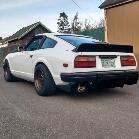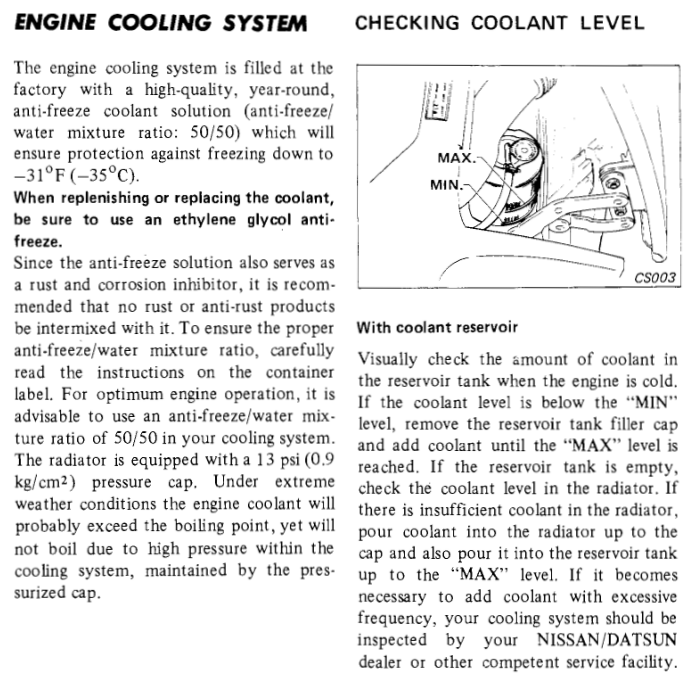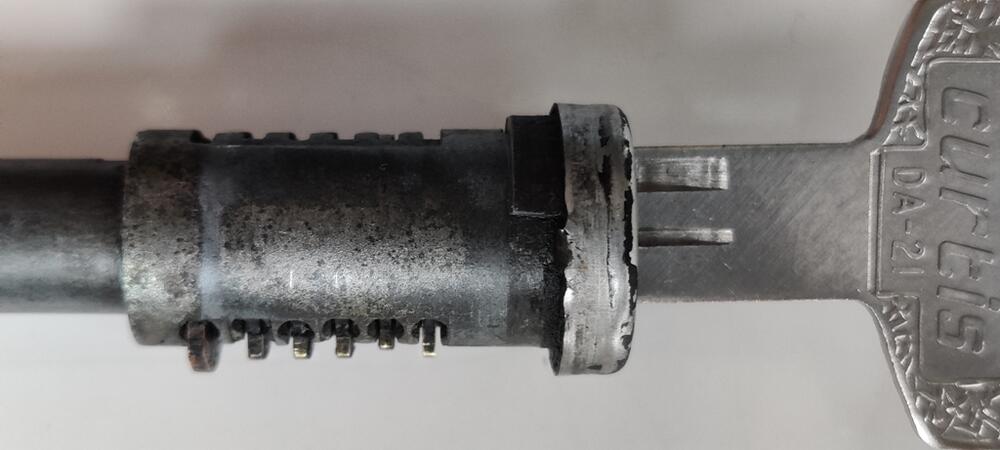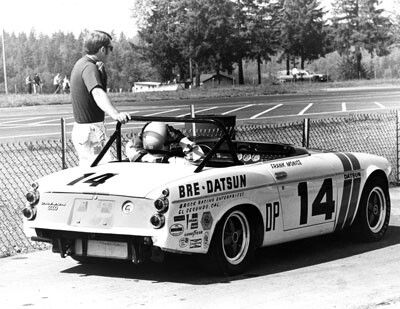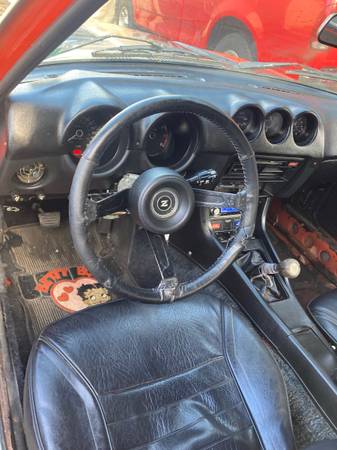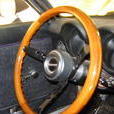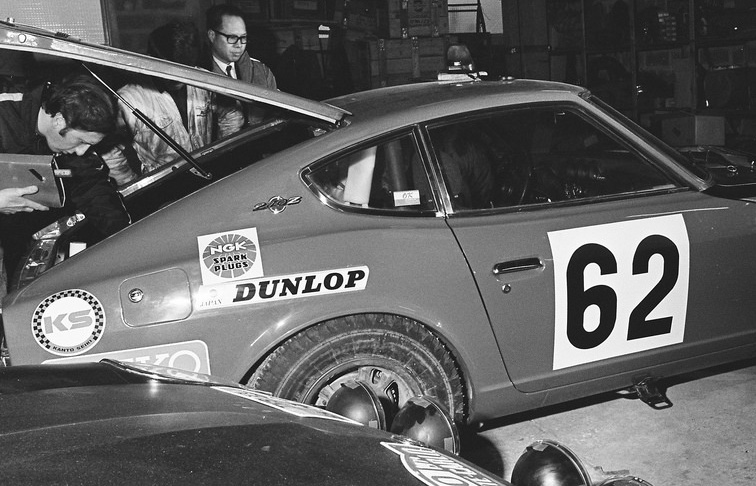Still figuring out my key and lock situation. I found some locksmiths online who have been in business a very long time and sent them inquiries. One was a little more than an hour away, but they said they only do "mobile" and wouldn't drive that far. Yeah. Whatever. The other hasn't responded.
So, in the meantime, I have been messing around with some of the locks I have on hand. After lubricating two door locks (with the same code) and a hatch lock, I was able to operate all three with a key I have (cut into a Curtis blank). The stainless covers and key "doors" on all of these locks are in rough shape. Curiosity got the best of me and I took the hatch lock apart and took some pictures.
What you are looking at here is the hatch lock cylinder in side profile view. The key is not inserted presently. Note the little bumps along the bottom of the cylinder - bottom in the picture those are "wafers", which we will see more closely in a min:
In this next picture, the key has been inserted. Note that the bumps (wafers) have moved a bit. The second one from the right is sticking out from the cylinder noticeably less:
Here, I have removed one wafer. It pushes out (snaps out) with only a little, initial resistance.
A closer look at the wafer:
I'm not sure how they differ, but one thing I suspect after looking at things closely: The key I have, which works the lock... I don't think it is actually the correct key. When I insert the key, the wafers are supposed to retract into the body of the cylinder fully, or at least such that, all of them extend out of the cylinder only a small and equal amount. With all retracted, the cylinder will turn inside the sleeve (not pictured), and thus the lock operates. With any of the wafers sticking out of the cylinder, the lock is not supposed to turn/operate.
Found this helpful info. Maybe I will be rekeying the locks myself.
https://objects.eanixter.com/PD508330.PDF






